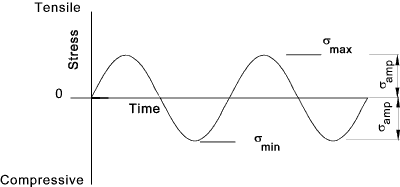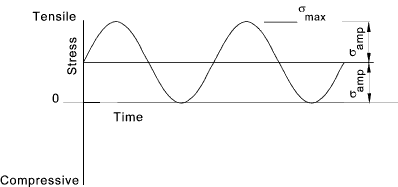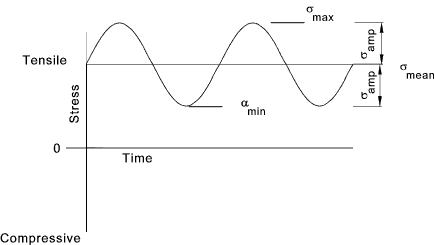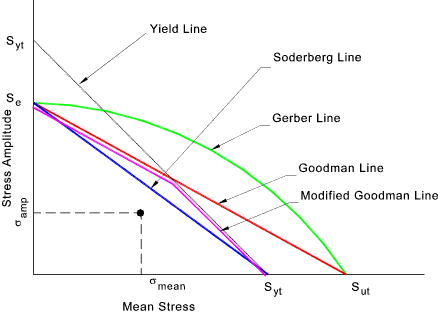| |
Fatigue Action Types
|
Fatigue Action types The fatigue action types refers to the types of stress loading that results in fatigue failures
in engineering materials.
In determining fatigue stress levels using standard test equipment the test specimens are subject to alternative/reversed stress levels... The cyclic stress varies from σ a tensile to σ a compressive. The mean stress = 0.
The fatigue strength values for metals are based on this loading condition with the
published fatigue strength values S'n, representing the material fatigue strength
property, being the σ amp value at failure.
In the repeated stress loading condition the stress varies between zero and a maximum tensile (or compressive) stress in a cyclic manner...
A stress condition normally experienced in practice is a cyclic stress imposed on a steady load stress..
For Alternating Stress... R = -1
The mean stress can have a significant effect on the failure due to fatigue and must
be considered in combination with the alternating stress..(Under normal fatigue loading conditions the mean stress is small compared to the
alternating stress.)
The Mean Stress σ mean is plotted on the horizontal axis
and the alternating stress σampis
plotted on the vertical axis.
If the point of the combined stress is below the Soderberg line then the component will
not fail . This is a very conservative criteria based on the material yield point Syt
If the point of the combined stress is below the relevant Goodman line then the component will
not fail . This is a less conservative criteria based on the material Ultimate strength
ield point Sut
If the point of the combined stress is below the Gerber line then the component will
not fail . This is a less conservative criteria based on the material Ultimate strength
Sut
|
Useful Links..
|
|
Please Send Comments to Roy Beardmore




